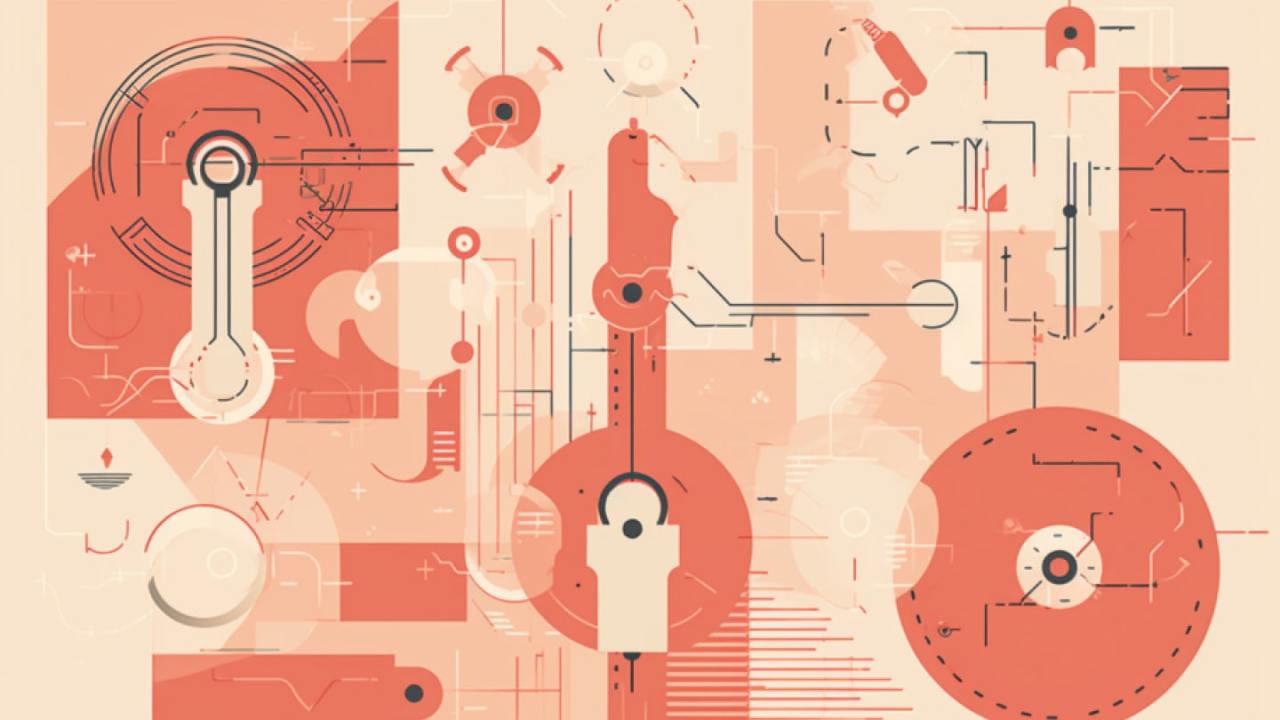Experience better visibility in business-critical services with ServiceNow Service Mapping
By developing a service visibility strategy, you can locate potential problems in your IT infrastructure and make changes before any downtime happens. Additionally, you can quickly drill down to identify the infrastructure component that’s causing the downtime.
Service Mapping
An aspirational tool for the modern IT department of an enterprise, Service Mapping discovers underlying IT applications, their components and creates a map on how these connect to business services. Using service mapping, you can build a window of all your business-critical services that’s always up to date.
Benefits
- Improved visibility
- Business continuity and compliance
- Aids data center migration planning
Implementing service maps is a complex process that requires following certain best practices and making strategic decisions. Decisions include how to identify environments during the ‘start stage’ and how to refine and maintain the service map during the ‘Fix’ and ‘Approve’ stage respectively. While each approach to these decisions has its own advantages and disadvantages, it is important to discuss these with the relevant stakeholders like application architects, security teams, product owners, and product sponsors before choosing the right approach.
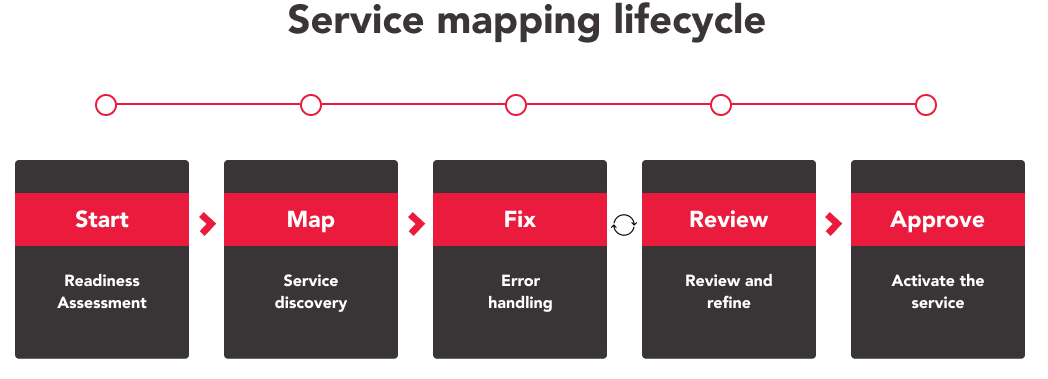
Best practices for improving service visibility
Consolidate your CMDB
Design a consolidated, “service-aware” CMDB to capture all critical infrastructure and business services across your organization. You’ll also need a configuration management leadership team made up of key stakeholders, including IT asset managers, application managers, and staff from the incident, process, and change management.
Prioritize business use cases
Start with business use cases rather than infrastructure; use cases such as business service impact analysis, asset management, compliance, or configuration management. Set one or two high-priority goals, execute against them, and then set new goals.
Adopt a phased approach
Once you’ve designed a global CMDB, the next step is to populate it. We recommend automating infrastructure discovery to populate your CMDB. It is typically much faster than manually gathering data from spreadsheets or running tools one at a time.
Automate Service Mapping
Automating the creation and maintenance of service maps showing services and their infrastructure dependencies is crucial. It is specifically designed to map a large number of complex business services; reduce mapping time from weeks to hours and discover all IT components and relationships that support service, including applications, middleware, servers, storage, networks, and more.
Recommended KPIs
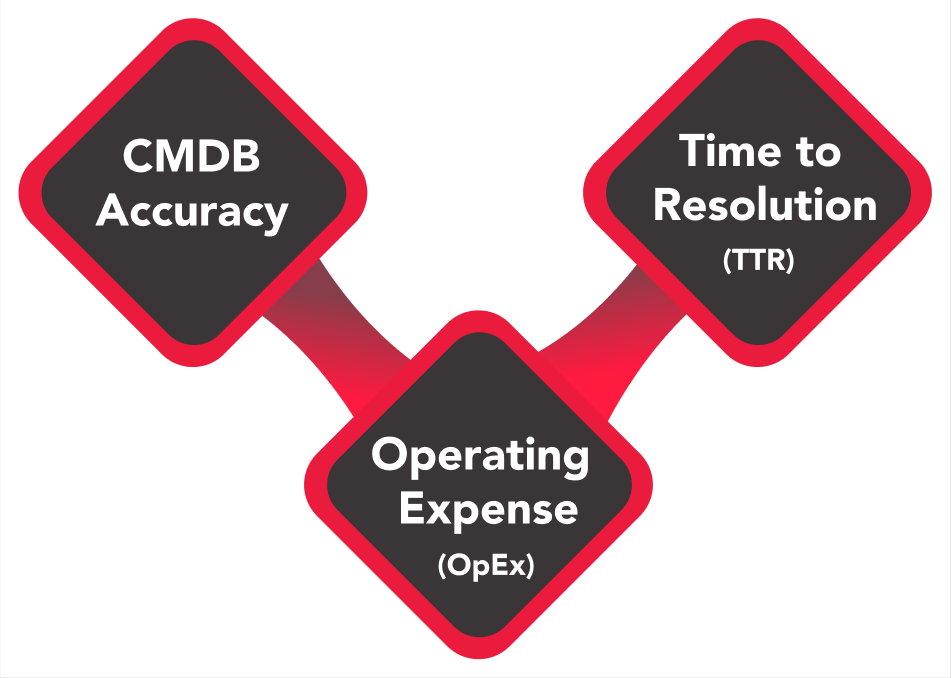
We recommend establishing KPIs to measure the success of your service visibility program.
Towards ITOM maturity
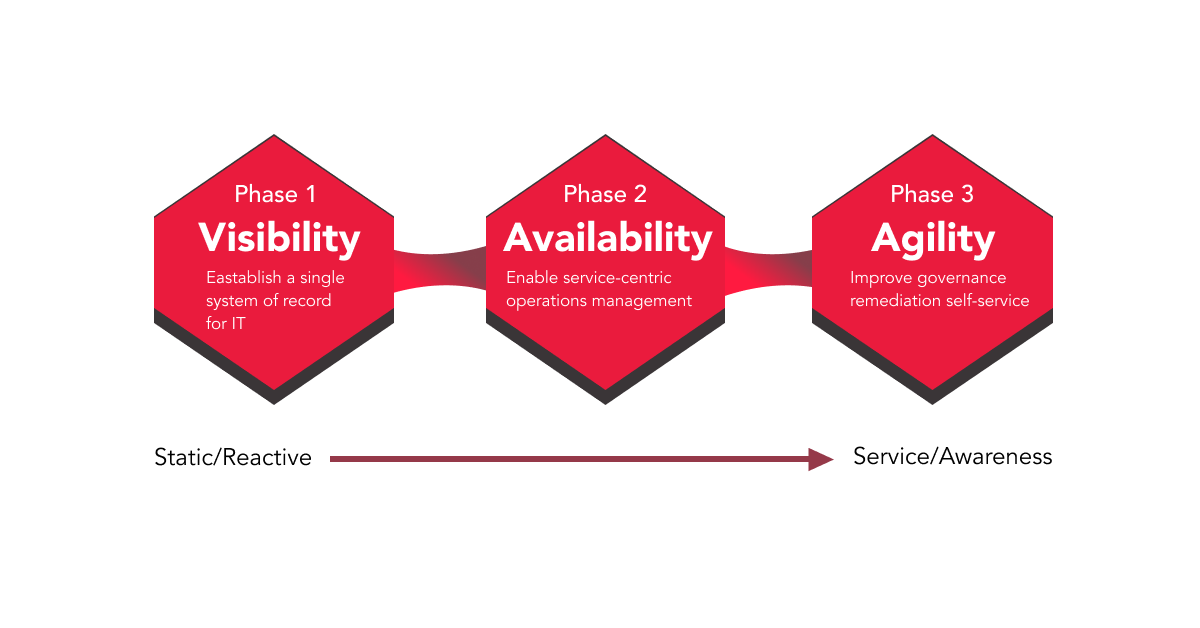
Gaining service visibility is the first phase of your journey to a successful IT operations management (ITOM) function that supports better business outcomes. The next phases are availability and agility. By achieving service visibility, you build a strong foundation for service-centric operations management—and significantly less downtime—during the availability phase.




